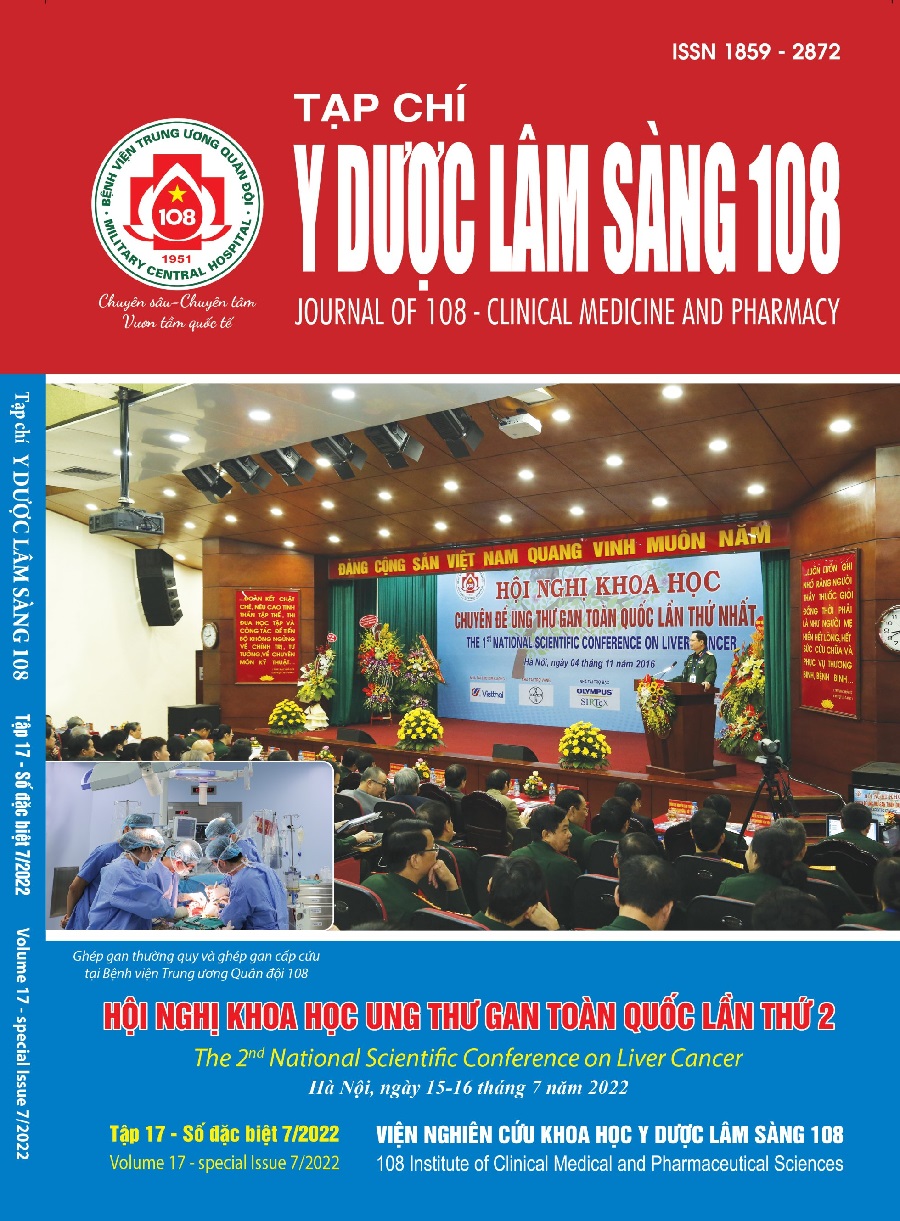Tổng quan về ứng dụng hạt nano trong điều trị ung thư biểu mô tế bao gan
Main Article Content
Keywords
Tóm tắt
Ung thư biểu mô tế bào gan (HCC) là loại ung thư phổ biến thứ 5 được chẩn đoán và nguyên nhân tử vong xếp thứ 2 trên toàn thế giới. Mặc dù có nhiều tiến bộ trong các phương pháp điều trị HCC nhưng vẫn tồn tại một số hạn chế, đặc biệt đối với những bệnh nhân ở gian đoạn cuối. Bài báo cáo này đánh giá toàn diện về việc áp dụng hạt nano để điều trị HCC và cho thấy tính linh hoạt trong điều trị và chẩn đoán, có thể xem đây là một công cụ thông minh trong điều trị đối với bệnh lý phức tạp này. Bài tổng quan này nhấn mạnh hiệu quả trong việc ứng dụng nhiều loại hạt nano có nguồn gốc khác nhau trong điều trị cũng như hỗ trợ điều trị HCC ở mô hình invitro và in vivo. Từ đó, sẽ giúp hiểu rõ hơn vai trò của hạt nano và mở ra một liệu pháp mới trong điều trị HCC.
Article Details
Các tài liệu tham khảo
2. Menahem B, Lubrano J, Duvoux C et al (2017) Liver transplantation versus liver resection for hepatocellular carcinoma in intention to treat: An attempt to perform an ideal meta-analysis. Liver Transpl 23: 836-844.
3. Chew SA, Moscato S, George S, Azimi B, Danti S (2019) Liver cancer: Current and future trends using biomaterials. Cancers (Basel) 11(12): 2026.
4. Baig B, Halim SA, Farrukh A, Greish Y, Amin A (2019) Current status of nanomaterial-based treatment for hepatocellular carcinoma. Biomed. Pharmacother 116: 108852.
5. Zhang Y, Wan Y, Liao Y, Hu Y et al (2020) Janus γ-Fe2O3/SiO2-based nanotheranostics for dual-modal imaging and enhanced synergistic cancer starvation/chemodynamic therapy. Science Bulletin 65: 564–572.
6. Wang X, Low XC, Hou W et al (2014) Epirubicin-adsorbed nanodiamonds kill chemoresistant hepatic cancer stem cells. ACS Nano 8: 12151-12166.
7. Gu M, Toh TB, Hooi L, Lim JJ et al (2019) Nanodiamond-mediated delivery of a G9a inhibitor for hepatocellular carcinoma therapy. ACS Appl. Mater. Interfaces 11(49): 45427-45441.
8. Kumar P, Singh AK, Raj V et al (2018) Poly(lactic-co-glycolic acid)-loaded nanoparticles of betulinic acid for improved treatment of hepatic cancer: Characterization, in vitro and in vivo evaluations. Int J Nanomedicine 13: 975-990.
9. Ma X, Cheng Z, Jin Y, Liang X et al (2014) SM5-1-conjugated PLA nanoparticles loaded with 5-fluorouracil for targeted hepatocellular carcinoma imaging and therapy. Biomaterials 35: 2878-2889.
10. Zhang C, An T, Wang D, Wan G et al (2016) Stepwise pH-responsive nanoparticles containing charge-reversible pullulan-based shells and poly(beta-amino ester)/poly(lactic-co-glycolic acid) cores as carriers of anticancer drugs for combination therapy on hepatocellular carcinoma. J. Control. Release 226: 193-204.
11. Liu Y, Li L, Li L, Zhou Z et al (2018) Programmed drug delivery system based on optimized “size decrease and hydrophilicity/hydrophobicity transformation” for enhanced hepatocellular carcinoma therapy of doxorubicin. Nanomedicine 14: 1111-1122.
12. Hanes J, Sills A, Zhao Z, Suh KW et al (2001) Controlled local delivery of interleukin-2 by biodegradable polymers protects animals from experimental brain tumors and liver tumors. Pharm. Res 18: 899-906.
13. Xu Y, Wen Z, Xu Z (2009) Chitosan nanoparticles inhibit the growth of human hepatocellular carcinoma xenografts through an antiangiogenic mechanism. Anticancer. Res. 29: 5103-5109.
14. Qi L, Xu Z, Chen M (2007) In vitro and in vivo suppression of hepatocellular carcinoma growth by chitosan nanoparticles. Eur. J. Cancer 43: 184-193.
15. Xue WJ, Feng Y, Wang F, Guo YB et al (2016) Asialoglycoprotein receptor-magnetic dual targeting nanoparticles for delivery of RASSF1A to hepatocellular carcinoma. Sci. Rep. 6: 22149.
 ISSN: 1859 - 2872
ISSN: 1859 - 2872
